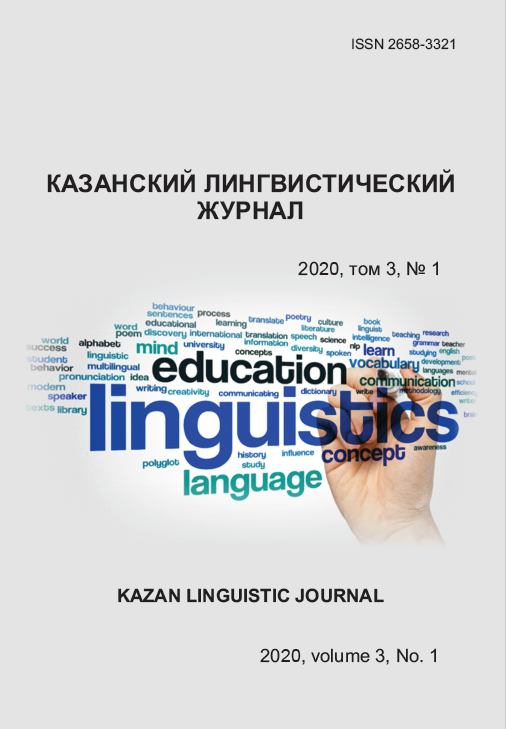Particularities of the study оf the idiomatic variants of spanish
Keywords:
Spanish Language, teaching, foreign language, idiomatic variants of Spanish, pedagogy, dialects, methodologyAbstract
The Spanish language is one of the most diverse languages in vocabulary and pronunciation in the world. This wealth is based on the history of centuries accumulated in each of the regions where it is considered official, either de facto or de iure. This plurality of the language contrasts sharply with the study programs used in teaching it as a foreign language. This article emphasizes the importance of restructuring the teaching of Spanish based on the specificities of the idiomatic variants present in it.
References
References
Belén Garí, Matilde Leder, Matilde Garí. Ciencias del Lenguaje; Alfa Nauta- Programa Educativo Temático. Barcelonm, Nauta C., S. A. ISBN 84-89140-58-8, 1995.
Burke, P. Languages and Communities in Early Modern Europe, Cambridge University Press, 2004.
Diccionario de la lengua española (DLE). Disponible en: dle.rae.es
Domínguez, Bazo y Herrera. Actividades comunicativas. Libro del profesor. EDELSA Grupo Didascalia S. A. España, 1991.
Fernández-Ordóñez, I. Los orígenes de la dialectología hispánica y Ramón Menéndez Pidal. Universidad Autónoma de Madrid.
Fernández Vítores, D. El español: una lengua viva. Informe 2019. Instituto Cervantes, 2019. // URL: https://cvc.cervantes.es/lengua/espanol_lengua_viva/ pdf/espanol_lengua_viva_2019.pdf
Guillermo Hernández García, José Manuel Cabrales Arteaga. Lengua y Literatura 2. Madrid, SGEL-Educación. ISBN 84-7143-926-3, 2006.
Guitart, Jorge M. Variability, multilectalism, and the organization of phonology in Caribbean Spanish dialects. In Martínez-Gil, Fernando; Morales-Front, Alfonso, Issues in the Phonology and Morphology of the Major Iberian Languages, Georgetown University Press, 1997 pp. 515–53.
Hilleary,C. Native Americans Gave Places, Animals, Plants Their Names. VOA, USA, 2017. // URL: https://www.voanews.com/usa/native-americans-gave- places-animals-plants-their-names
Instituto Cervantes. El Español: Una Lengua Viva, «1. El Español en Cifras», pp. 6-7, Madrid, España, 2018.
Kamen, H. Breve Historia de España. Omega Alfa. España, 2009.
Lope Blanch, Juan M. Sobre la influencia fonética Maya en el español de Yucatán, página 420, Thesavrvs boletín del instituto Caro y Cuervo, Tomo XXXVI, número 3, 1981.
Lope Blanch, Juan M. Cuestiones de filología mexicana p.29 México, ed. Universidad Nacional Autónoma de México, ISBN 978-970-32-0976-7, 2004.
López-Portillo y Weber, J. La conquista de la Nueva Galicia, página 144, México, 1976.
Lozano, I. Lenguas en guerra, p. 92. Espasa-Calpe, 2005.
Moreno Fernández F., Otero Roth, J. Atlas de la lengua española en el mundo (pág. 33). Madrid, 2007, ISBN 978-84-08-07800-5.
Obediente, E. Biografía de una lengua: nacimiento, desarrollo y expansión del español pp. 244-248. Mérida, Venezuela, Universidad de Los Andes ed. Editorial Venezolana C. A. ISBN 978-980-11-1026-2, 2007.
Palomino M.A. Chicos y chicas. Libro del profesor. Edelsa Grupo Didascalia, S.A. Madrid, España, 2002.
Quilis, A.Tratado de fonología y fonética españolas, página 219, 1993.
Real Academia de la Historia. España: reflexiones sobre el ser de España p.
Madrid, ed. Real Academia de la Historia, ISBN 84-89512-04-3, 1998.
Zamora Munné, Juan Clemente; Guitart, Jorge M. Dialectología hispanoamericana: teoría, descripción, historia, página 134, 1982.






